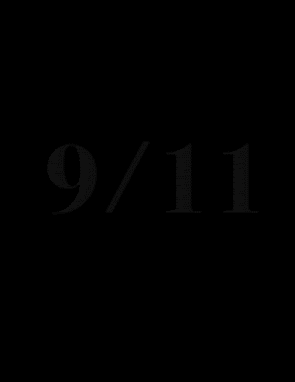More than a decade and a half after the Cold War ended, the world's combined stockpile of nuclear warheads remain at a very high level: more than 23,300.
Of these, more than 8,190 warheads are considered operational, of which approximately 2,200 U.S. and Russian warheads are on high alert, ready for use on short notice.
The exact number of nuclear weapons in each country's possession is a closely held national secret. Despite this limitation, however, publicly available information and occasional leaks make it possible to make best estimates about the size and composition of the national nuclear weapon stockpiles:
| Status of World Nuclear Forces 2009* |
| Country | Strategic | Non-Strategic | Operational | Total Inventory |
| Russia | 2,790 | 2,050a | 4,840 | 13,000b |
| United States | 2,200 | 500c
| 2,700d | 9,400e |
| France | 300 | n.a. | ~300 | 300f |
| China | 180 | ? | ~180
| 240g |
| United Kingdom | 160 | n.a. | <160 | 185h |
| Israel | 80 | n.a. | n.a. | 80i |
| Pakistan | 60 | n.a. | n.a. | 60i |
| India | 60 | n.a. | n.a. | 60i |
| North Korea | <10 | n.a. | n.a. | <10j |
| Iran | 0 | 0 | 0 | 0 |
| Total: | 5,850k | 2,550k | 8,190k | 23,335k |
| * All numbers are estimates and further described in the Nuclear Notebook in the Bulletin of the Atomic Scientists, and the nuclear appendix in the SIPRI Yearbook. Additional reports are published on the FAS Strategic Security Blog. Unlike those publications, this table is updated continuously as new information becomes available. Current update: April 2, 2009.
a Russia's estimated total inventory of non-strategic warheads is approximately 5,390 warheads, down from 15,000 in 1991.
b The estimate for the size and composition of the total Russian inventory comes with considerable uncertainty but is based on Cold War levels, subsequent dismantlement rates, and official Russian statements. Perhaps as many as a quarter (~3,000) of the weapons listed may be awaiting dismantlement.
c Approximately 200, probably including some inactive warheads, are deployed in Europe.
d An additional 2,500 warheads are spares and in reserve to increase the operational force if necessary but are not counted as operational.
e In addition to the 5,200 warheads in the DOD stockpile, approximately 4,200 retired warheads are awaiting dismantlement. In addition, more than 12,000 plutonium cores (pits) and some 5,000 Canned Assemblies (secondaries) are in storage. See here for breakdown of U.S. warhead inventory.
f France is thought to have a small inventory of spare warheads but no reserve like the United States and Russia. An additional reduction announced by President Sarkozy in March 2008 will reduced the inventory to slightly less than 300 warheads in 2009.
g Many "strategic" warheads are for regional use. The status of a Chinese non-strategic nuclear arsenal is uncertain. Some deployed warheads may not be fully operational. Additional warheads are in storage, for a total stockpile of approximately 240 warheads.
h Only 50 missiles are left, for a maximum of 150 warheads. “Less than 160” warheads are said to be "operationally available," but a small number of spares probably exist too. Forty-eight missiles are needed to arm three SSBNs with a maximum of 144 warheads. One submarine with “up to 48 warheads” is on patrol at any given time. In addition to the operationally available warheads, Britain probably has a small inactive reserve.
i All warheads of the four lesser nuclear powers are considered strategic. Only some of these may be operational.
j On October 8, 2006, North Korea announced it had conducted a nuclear test. There is no publicly available evidence that North Korea has operationalized its nuclear weapons capability.
k Numbers may not add up due to rounding and uncertainty about the operational status of the four lesser nuclear weapons states and the uncertainty about the size of the total inventories of three of the five initial nuclear powers.
|
The information available for each country varies greatly, ranging from the most transparent nuclear weapons state (United States) to the most opaque (North Korea). Accordingly, while the stockpile for the United States is based on real numbers, the North Korean stockpile is highly uncertain. Indeed, although U.S. Intelligence claims that North Korea may have assembled a few nuclear weapons and North Korea claims to have some, no information is available in the public domain that proves that North Korea has assembled a nuclear weapons much less has an operational nuclear weapon.
http://www.fas.org/programs/ssp/nukes/nuclearweapons/nukestatus.html
Israel's Nuclear Weapons

![[Image6.jpg]](https://blogger.googleusercontent.com/img/b/R29vZ2xl/AVvXsEgNaIXg0_48iqICxzb6odLToabJmiXgIjhmXaaQyem2ZqzqBXttSLZ5ZLzpqG48utbI-EPPDZOwHW19xkVk6_qj-4gGaiLcqw1Lumv61U_Dp6ry0lnUKPQjm4QQaBs91esrSLKl7FKZEg/s1600/Image6.jpg)




![[Zionazis-1.jpg]](https://blogger.googleusercontent.com/img/b/R29vZ2xl/AVvXsEikwu0oZAslARhcp5cHmtn_ED-tlInbWtl392lehVem2UebCE8-gQUb_PM9b3QAHAeIAZqOe9OdInZLq5FQj9DJQ1WO-Fwk2rFEj21TTXPcrfgRXuKUBajDSGzzQbZYupW7oQgq9YhhZg/s1600/Zionazis-1.jpg)


